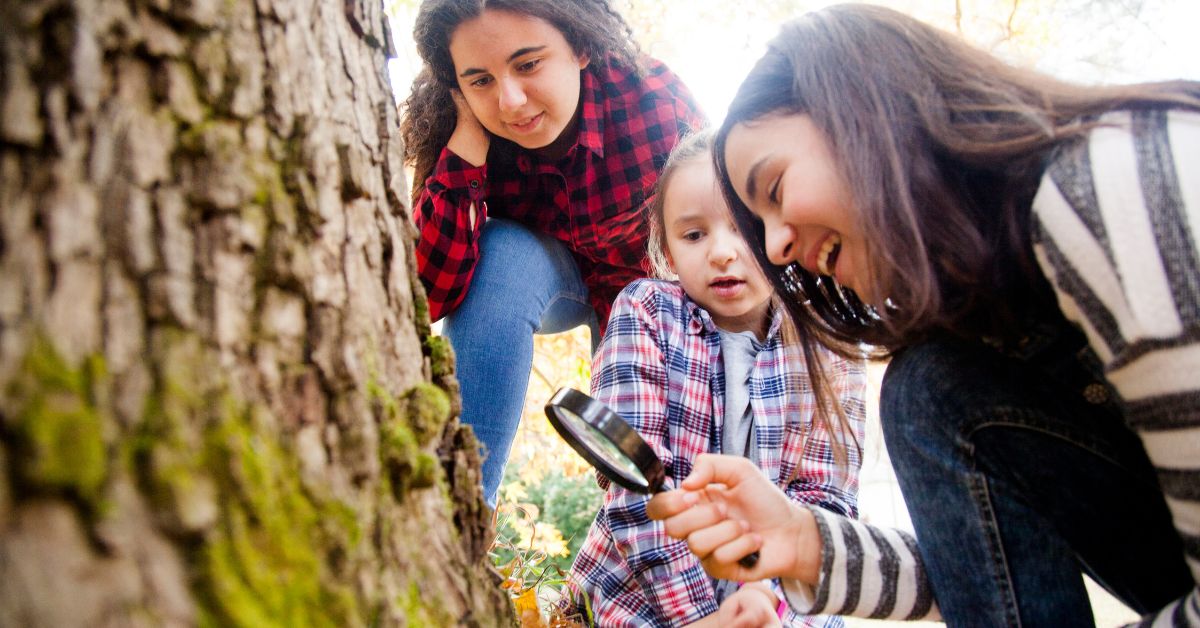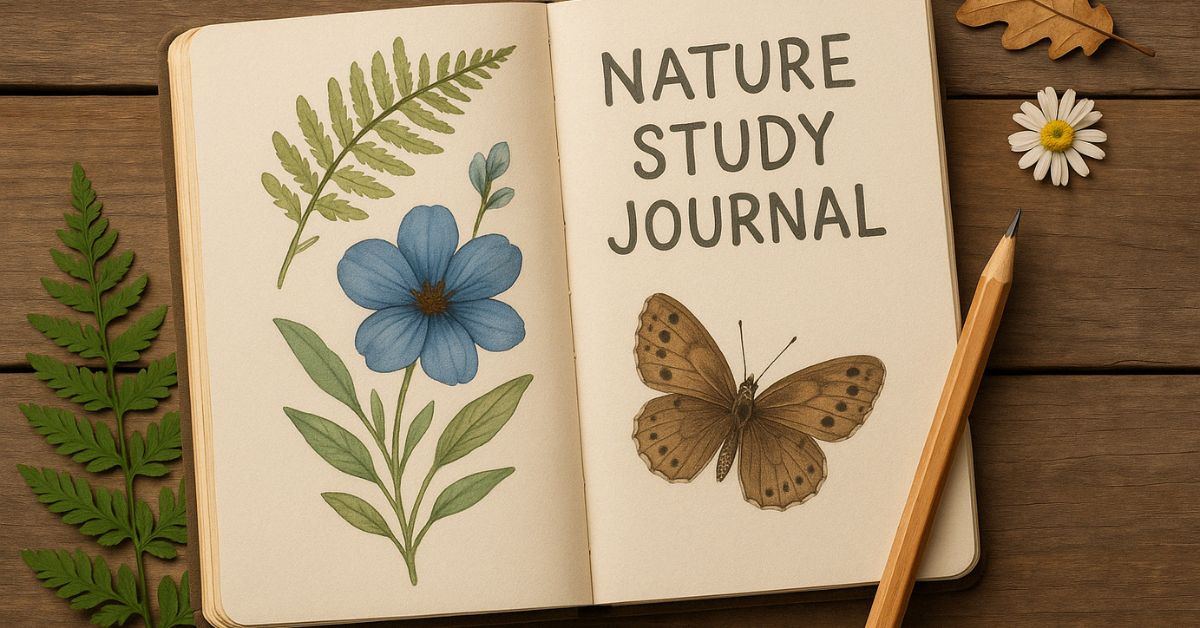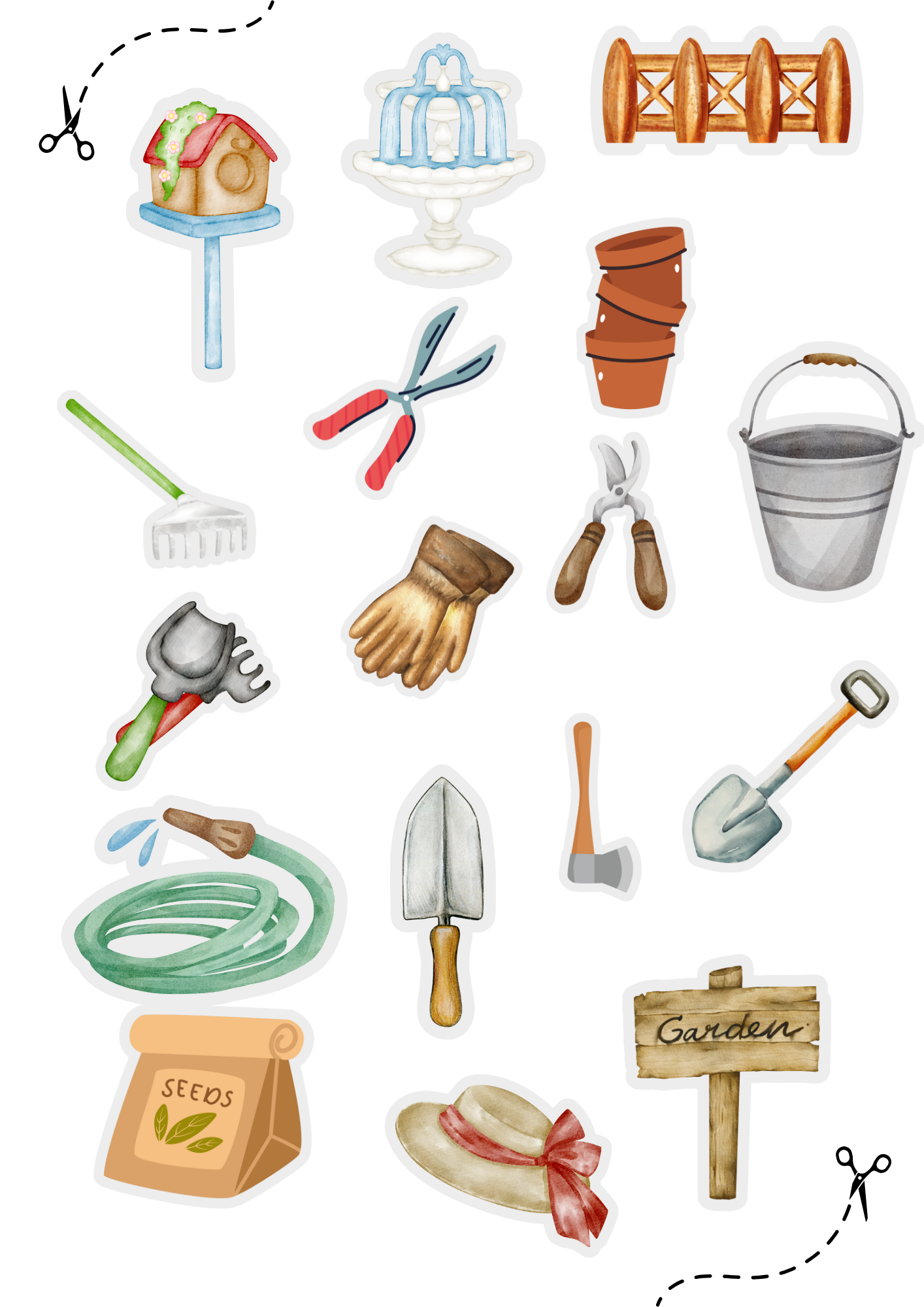Charlotte Mason, a prominent 19th-century British educator, emphasized the importance of letting children learn through experience, especially in nature. Her philosophy encourages students to observe and document the natural world as a way to foster curiosity, creativity, and an appreciation for the outdoors. A nature study journal is a centerpiece of this approach, offering a way to integrate art, science, and storytelling into your homeschool day.
If you’re intrigued by the idea of combining hands-on learning with time outdoors, a Charlotte Mason nature study journal is a wonderful place to start. This post will guide you through creating your own nature journal, share journal ideas, and offer practical homeschool nature activities to make your studies more engaging.
What is a Charlotte Mason Nature Study Journal?
A Charlotte Mason-inspired nature study journal is a personal record where children document their outdoor observations. It’s usually a combination of sketches, notes, and reflections about the plants, animals, weather, and other natural phenomena they encounter. This tool not only helps develop scientific observation skills but also teaches children mindfulness and an appreciation for God’s creation.
These journals are informal and do not need to meet rigid standards, making them accessible to homeschoolers of all ages. Whether your child has a knack for drawing detailed insects or loves writing imaginative stories about trees, a nature journal is a flexible, multi-purpose record of their interactions with the world.
Materials to Get Started
To create a nature study journal, you don’t need an extensive supply list. Start with simple tools, and expand as your homeschool routine allows. Here’s a basic list of supplies:
- A sturdy journal or notebook (preferably with thick, unlined pages to allow for artwork and writing)
- Colored pencils or markers for drawings
- Watercolor paints for more vibrant, artistic entries
- A magnifying glass for closer looks at plants, insects, and other natural objects
- Glue or tape to attach small items like pressed flowers or leaves
- Field guides for identifying flora, fauna, and other environmental elements
- A pencil pouch to keep all supplies easily accessible for outdoor journaling
- Weather-proof bag for nature walks to protect the journal from the elements
These tools are all you need to begin. Since journaling is organic and personal, feel free to add or eliminate materials based on your child’s preferences.
Transform your nature study journal with these delightful printable stickers! Just print, snip, and stick to bring your pages to life with a touch of creativity and charm!
Nature Journal Ideas
When it comes to journaling, there’s no one “right” way to do it. Each child will develop their own style over time. Here are a few Charlotte Mason nature study journal ideas to inspire your homeschool adventures:
- Sketch and label plants: Take a walk in your backyard or garden and have your child draw flowers, leaves, or interesting plants. Encourage them to label each one and write down a quick description about where they found it.
- Record weather patterns: Dedicate one section of the journal to observations about the clouds, rainfall, or temperature. Older students can even sketch cloud types like cirrus or cumulus and compare them to a weather guide.
- Draw animal tracks: On muddy or sandy paths, look for evidence of animals that have passed through. Your child can sketch the tracks they see and hypothesize which creatures made them.
- Leaf rubbings: If your child enjoys hands-on activities, teach them how to do leaf rubbings. Place a leaf under a page, lightly color over it with crayons, and watch the leaf’s veins and structure appear.
- Seasonal studies: Have your child journal about how their surroundings change with the seasons. They can draw budding trees in spring or write a descriptive paragraph about autumn leaves.
- Nature poems: Encourage creativity by adding short poems or haikus inspired by what they observe. This blends language arts with nature study beautifully.
Experiment with these ideas to find what resonates most with your child, and remember that the journal evolves over time.

Benefits of Homeschooling with a Nature Study Journal
Charlotte Mason nature study doesn’t just expose children to the outdoors; it builds skills that stay with them for life. Journaling, in particular, offers a meaningful way to combine academic subjects while keeping learning dynamic and fun.
For younger children, creating a nature notebook helps develop fine motor skills through drawing and writing. It encourages a sense of wonder as they learn to notice the smallest details of a flowerpetal or bird feather. Meanwhile, for older students, nature journaling fosters critical thinking as they analyze patterns, make observations, and conduct simple nature experiments.
Another fantastic benefit is how this practice can establish a meaningful family rhythm. Nature study often means stepping away from screens, slowing down, and being fully present. Sharing journals as a family also adds layers of bonding and encourages even parents to reconnect with nature.
The Role of Outdoor Exploration
At the heart of a Charlotte Mason nature journal is the act of being outdoors. Nature study doesn’t happen in a vacuum, and you’ll gain the most value by spending regular time outside with your children.
Start incorporating outdoor exploration into your homeschool routine once or twice a week if possible. Visiting local parks, hiking trails, or even your backyard can offer plenty of opportunities to observe the natural world. Some parents enjoy setting seasonal or monthly themes to guide these walks, such as focusing on birds in the spring or wildflowers in the summer. Encourage observation skills by asking questions like, “What do you think this bird is doing?” or, “Why do you think the leaves on this tree are shaped this way?”
While exploring, try to approach nature in a gentle, curious way without rushing through observations. Building emotional connections to the natural environment helps develop not only scientific knowledge but also a child’s sense of stewardship for the world around them.
Fun Homeschool Nature Activities
Adding hands-on activities to your nature study will enrich your homeschool experience. Here are a few ideas that align with Charlotte Mason’s philosophy and work well alongside journaling:
Set up a bird feeder in your yard and record details about visiting species in the journal. Your child can sketch their feather colors, note the type of seeds they eat, and even name the birds!
Go on scavenger hunts where children search for specific items like acorns, pine cones, or different shades of green. Create a list in advance to make the activity structured yet flexible.
Conduct a tree study by selecting one tree in your yard or nearby park. Encourage your child to observe its changes over time, sketch its leaves or bark, and write about any animals or birds that rely on it for shelter.
Press flowers and leaves using a heavy book and wax paper. Once dried, your child can tape these into their journal and label them with plant names, making it a mini herbarium.
Build a mini insect habitat in a jar and observe how insects crawl, eat, and interact. (Be sure to release them safely when the activity is done.)
Track the moon phases over a month and create corresponding sketches or notes.
With these activities, your child engages their senses while learning biology, geography, and other natural sciences.
Implementing a Routine
Consistency is key to making nature journaling a sustained part of your homeschooling experience. Ideally, try to set aside one day each week as “nature study day.” After spending some time outside, transition into journaling while your child’s observations are still fresh.
Create a quiet, inviting space for journal entries. Place all art supplies nearby, and give your child ample time to explore their creativity. If you have multiple children, encourage everyone to share their journals at the end of the session.
It’s also helpful to model interest in journaling by creating your own entries. When children see you involved, they’re more likely to enjoy it themselves.
By integrating these ideas into your homeschool routine, you’ll nurture a love for learning while instilling an appreciation for the beauty of the natural world. A Charlotte Mason nature study journal is not just a tool for education but a keepsake of your child’s personal growth and exploration.









